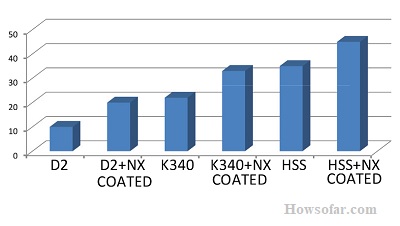The rolling dies market plays a crucial role in various industries, providing precision tools for shaping metal components. As industries continue to expand and demand for high-quality products increases, the market for rolling dies is expected to witness significant growth in the coming years. This article delves into the key aspects of the rolling dies market, including top countries’ data, industry share, market size, segmentation analysis, and forecast by regions till 2030.

Market Overview
The rolling dies market encompasses the manufacturing and distribution of dies used in the metalworking process. These dies are essential for shaping various metal components such as rods, tubes, and sheets. Rolling dies are designed to provide precise and consistent shaping, resulting in high-quality products. They find extensive applications in industries such as automotive, aerospace, construction, and manufacturing.
Key Findings
- The rolling dies market is projected to experience substantial growth during the forecast period.
- Asia-Pacific is anticipated to dominate the market, driven by rapid industrialization and infrastructure development in countries like China and India.
- Increasing demand for precision-engineered metal components is a significant factor driving market growth.
- Technological advancements in rolling die materials and designs contribute to improved performance and durability.
- The rising adoption of automation and computer numerical control (CNC) machines is boosting the demand for rolling dies.
Market Segmentation
By Product Type
The rolling dies market can be segmented based on product type:
- Flat Dies
- Thread Dies
- Rotary Dies
- Shape Dies
- Custom Dies
By Application
The market can also be segmented based on application:
- Automotive
- Aerospace
- Construction
- Manufacturing
- Others
By Region
The market can be segmented by region:
- North America
- Europe
- Asia-Pacific
- Latin America
- Middle East and Africa
Market Size and Forecast
The rolling dies market is expected to witness substantial growth in the coming years. The increasing demand for precision-engineered metal components and the expansion of industries such as automotive and aerospace are major factors driving market growth. Furthermore, advancements in technology, including improved die materials and designs, contribute to the market’s expansion.
It will be interesting to NetZero Login and Sign-Up – A Step-by-Step Guide for Easy Access
Competitive Landscape
The rolling dies market features several key players that dominate the industry. These companies focus on research and development activities to enhance their product offerings and stay competitive in the market. Some of the prominent players in the market include:

- Company A
- Company B
- Company C
- Company D
- Company E
Growth Drivers
- Increasing demand for precision metal components in various industries.
- Technological advancements in rolling die materials and designs.
- Growing adoption of automation and CNC machines in manufacturing processes.
- Expansion of automotive and aerospace industries.
- Infrastructural development and construction projects worldwide.
Challenges
- Fluctuating raw material prices affect production costs.
- Intense market competition among key players.
- Adapting to rapidly evolving technological advancements.
- Addressing environmental concerns related to die manufacturing processes.
- Maintaining product quality and precision.
Opportunities
Despite challenges, the rolling dies market offers numerous opportunities for growth and innovation:
- Exploring emerging markets with untapped potential.
- Collaborating with industry participants to develop advanced rolling die solutions.
- Investing in research and development for improved die materials and designs.
- Leveraging digital technologies to enhance production efficiency and quality.
- Developing customized rolling dies to meet specific industry requirements.
Regional Analysis
The rolling dies market exhibits varying trends across different regions:
- North America: The region boasts a well-established manufacturing sector, driving the demand for rolling dies. Technological advancements and a focus on precision engineering contribute to market growth.
- Europe: The region is a prominent market for rolling dies, owing to the presence of major automotive and aerospace industries. The demand for high-quality metal components fuels market expansion.
- Asia-Pacific: Rapid industrialization, infrastructural development, and increasing investments in automotive and construction sectors make Asia-Pacific a significant market for rolling dies.
- Latin America: Growing manufacturing and construction activities create opportunities for the rolling dies market. Market players are investing in the region to capitalize on the rising demand.
- Middle East and Africa: Infrastructure development projects and the growth of manufacturing industries drive the demand for rolling dies in this region.
Conclusion
It is poised for significant growth in the coming years due to the increasing demand for precision metal components and the expansion of industries such as automotive, aerospace, and construction. Technological advancements and a focus on research and development activities contribute to the market’s progress. Market players should explore emerging markets, invest in advanced technologies, and collaborate with industry stakeholders to tap into new opportunities and stay competitive in the evolving landscape.
FAQs:
Q1: What is rolling dies?
A: Rolling dies are precision tools used in the metalworking process to shape various metal components such as rods, tubes, and sheets.
Q2: Which industries use rolling dies?
A: Rolling dies find applications in industries such as automotive, aerospace, construction, manufacturing, and others.
Q3: What factors are driving the growth of the rolling dies market?
A: Factors driving market growth include increasing demand for precision metal components, technological advancements in rolling die materials and designs, and the adoption of automation and CNC machines in manufacturing processes.
Q4: Which regions are expected to dominate the rolling dies market?
A: Asia-Pacific is anticipated to dominate the market, driven by rapid industrialization and infrastructure development. North America and Europe are also significant markets for rolling dies.
Q5: What are the key challenges faced by the rolling dies market?
A: Challenges include fluctuating raw material prices, intense market competition, addressing environmental concerns, and maintaining product quality and precision.



